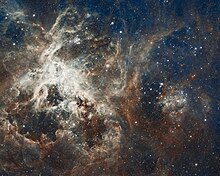
Size of this preview: 749 × 599 pixels. Other resolutions: 300 × 240 pixels | 600 × 480 pixels | 960 × 768 pixels | 1,280 × 1,024 pixels | 2,560 × 2,048 pixels | 20,323 × 16,259 pixels.
Original file (20,323 × 16,259 pixels, file size: 99.35 MB, MIME type: image/jpeg)
| This is a featured picture, which means that members of the community have identified it as one of the finest images on the English Wikipedia, adding significantly to its accompanying article. If you have a different image of similar quality, be sure to upload it using the proper free license tag, add it to a relevant article, and nominate it. |
| This image was selected as picture of the day on the English Wikipedia for May 14, 2024. |
File history
Click on a date/time to view the file as it appeared at that time.
| Date/Time | Thumbnail | Dimensions | User | Comment | |
|---|---|---|---|---|---|
| current | 18:35, 8 July 2012 |  | 20,323 × 16,259 (99.35 MB) | Prof. Professorson | Higher resolution, converted from http://spacetelescope.org/static/archives/images/original/heic1206a.tif. |
| 12:13, 19 April 2012 |  | 2,340 × 1,847 (2.52 MB) | Dipankan001 |
File usage
The following 76 pages use this file:
- List of Hubble Space Telescope anniversary images
- Starburst region
- Tarantula Nebula
- Talk:Tarantula Nebula
- User:100 lion
- User:Kpddg/TalkHeader
- User:Liesmith42
- User:LucasTichawa
- User:North8000
- User:Ta,jhk
- User:The Determinator/Userpage/Top/Image
- User:WhiskeyJack27
- User talk:Kpddg
- User talk:TheFreeWorld/Archive 3
- Wikipedia:Featured picture candidates/January-2022
- Wikipedia:Featured picture candidates/Tarantula Nebula
- Wikipedia:Featured pictures/Space/Looking out
- Wikipedia:Featured pictures thumbs/72
- Wikipedia:Main Page history/2024 May 14
- Wikipedia:Main Page history/2024 May 14b
- Wikipedia:Picture of the day/May 2024
- Wikipedia:Teahouse/Guest/Featured/21
- Wikipedia:Teahouse/Guest/Featured/22
- Wikipedia:Teahouse/Guest book/Archive 0
- Wikipedia:Teahouse/Guest book/Archive 10
- Wikipedia:Teahouse/Guest book/Archive 13
- Wikipedia:Teahouse/Guest book/Archive 14
- Wikipedia:Teahouse/Guest book/Archive 15
- Wikipedia:Teahouse/Guest book/Archive 16
- Wikipedia:Teahouse/Guest book/Archive 17
- Wikipedia:Teahouse/Guest book/Archive 18
- Wikipedia:Teahouse/Guest book/Archive 19
- Wikipedia:Teahouse/Guest book/Archive 20
- Wikipedia:Teahouse/Guest book/Archive 21
- Wikipedia:Teahouse/Guest book/Archive 22
- Wikipedia:Teahouse/Guest book/Archive 23
- Wikipedia:Teahouse/Guest book/Archive 26
- Wikipedia:Teahouse/Guest book/Archive 28
- Wikipedia:Teahouse/Guest book/Archive 29
- Wikipedia:Teahouse/Guest book/Archive 30
- Wikipedia:Teahouse/Guest book/Archive 31
- Wikipedia:Teahouse/Guest book/Archive 34
- Wikipedia:Teahouse/Guest book/Archive 35
- Wikipedia:Teahouse/Guest book/Archive 36
- Wikipedia:Teahouse/Guest book/Archive 37
- Wikipedia:Teahouse/Guest book/Archive 39
- Wikipedia:Teahouse/Guest book/Archive 40
- Wikipedia:Teahouse/Guest book/Archive 42
- Wikipedia:Teahouse/Guest book/Archive 43
- Wikipedia:Teahouse/Guest book/Archive 44
- Wikipedia:Teahouse/Guest book/Archive 45
- Wikipedia:Teahouse/Guest book/Archive 47
- Wikipedia:Teahouse/Guest book/Archive 48
- Wikipedia:Teahouse/Guest book/Archive 49
- Wikipedia:Teahouse/Guest book/Archive 50
- Wikipedia:Teahouse/Guest book/Archive 51
- Wikipedia:Teahouse/Guest book/Archive 52
- Wikipedia:Teahouse/Guest book/Archive 53
- Wikipedia:Teahouse/Guest book/Archive 54
- Wikipedia:Teahouse/Guest book/Archive 55
- Wikipedia:Teahouse/Guest book/Archive 56
- Wikipedia:Teahouse/Guest book/Archive 58
- Wikipedia:Teahouse/Guest book/Archive 60
- Wikipedia:Teahouse/Guest book/Archive 61
- Wikipedia:Teahouse/Guest book/Archive 66
- Wikipedia:Teahouse/Guest book/Archive 67
- Wikipedia:Teahouse/Guest book/Archive 68
- Wikipedia:Teahouse/Guest book/Archive 7
- Wikipedia:Teahouse/Guest profile summary
- Wikipedia:Teahouse/Guest profile summary/Avatars
- Wikipedia:Teahouse/Guests
- Wikipedia:Teahouse/Guests/Left column
- Wikipedia:Teahouse/Guests/Right column
- Wikipedia:WikiProject Astronomy/Recognized astronomy content
- Wikipedia:WikiProject Astronomy/Recognized content
- Template:POTD/2024-05-14
Global file usage
The following other wikis use this file:
- Usage on af.wikipedia.org
- Usage on ar.wikipedia.org
- Usage on be-tarask.wikipedia.org
- Usage on bn.wikipedia.org
- Usage on crh.wikipedia.org
- Usage on cs.wikipedia.org
- Usage on cv.wikipedia.org
- Usage on de.wikipedia.org
- Usage on en.wikinews.org
- Mars orbiter finds widespread evidence of water-bearing minerals
- Men isolated to mimic Mars flight
- Rosetta spacecraft passes Lutetia asteroid
- Scientists say the moon is slowly shrinking
- Scientists conclude that the universe may expand forever
- Russian cargo ship launches to International Space Station
- Russian Soyuz space capsule lands safely with crew
- Moon water possibly originated from comets, data shows
- Mars Opportunity rover passes distance milestone
- Saturn moon Enceladus may have salty ocean
- SETI Institute set to re-open
- Meteorites in Morocco found to be from Mars
- Researchers survey planet-sized space weather explosions at Venus
- Researchers say light signal from space suggests merging black holes
- Scientists find ancient solar system in Milky Way galaxy
- Simulations show planet orbiting Proxima Centauri could have liquid water
- Manned Soyuz space mission aborts during launch
- Simple animals could live in Martian brines: Wikinews interviews planetary scientist Vlada Stamenković
- Saudi Arabia announces astronaut to be nation's first female space traveler
- Usage on en.wikiversity.org
- Usage on es.wikipedia.org
- Usage on et.wikipedia.org
- Usage on fa.wikipedia.org
- Usage on fr.wikipedia.org
- Usage on hu.wikipedia.org
- Usage on id.wikipedia.org
- Usage on ja.wikipedia.org
View more global usage of this file.

